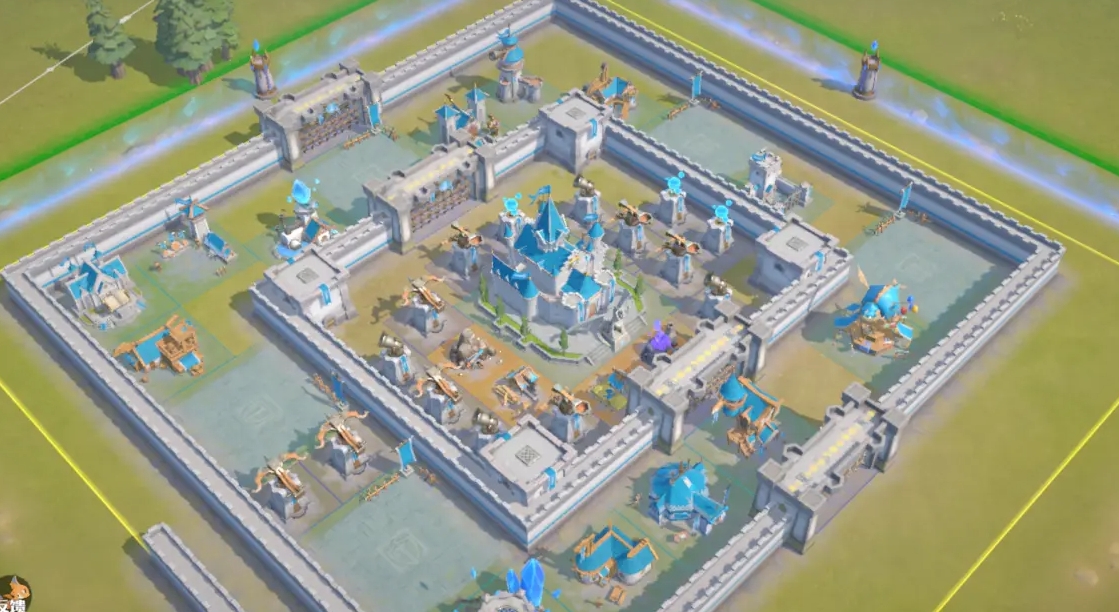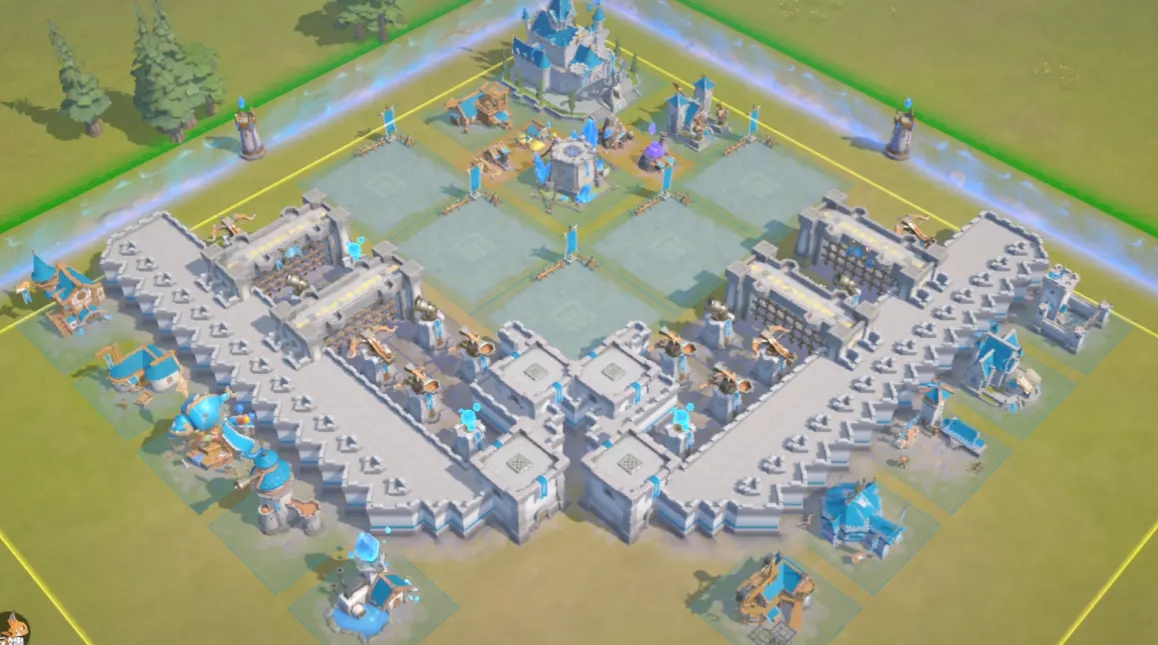If you are participating in the game Dragonstone War, then on the first day of pioneering, how do the great lords plan to develop their territories on this continent? Sharing strategies for Dragonstone War is definitely the primary skill to understand. Some lords have already secured a place on the leaderboard with their excellent strategies and bold actions, while those who are temporarily lagging behind can check out the gameplay tips introduced in this issue.
When it comes to layout, being meticulous is crucial for the survival of your territory. The planning of city construction must steadily progress in line with the rhythm of the tasks. The distribution of buildings within the city, from a strategic perspective, should primarily focus on defending against external enemies. Let's start with the most conventional city defense layout. The core idea of this layout is to make full use of the solid barrier of the city walls, encircling the entire urban area tightly. The purpose is to cleverly drag the battlefield into the inner city, forcing the enemy into a narrow and complex street battle environment.

In actual construction, the city walls need to stand at the periphery, serving as the first line of defense, blocking the direct impact of the enemy. Various functional buildings should be distributed in an orderly manner on the inside, forming an organic whole. Arrow towers should be placed in the corners of the city, ready to fire arrows simultaneously once the enemy approaches. Traps should be cleverly set up throughout the city, waiting for the enemy to step into them. Garrisons should also be properly placed within the city, serving as the center for troop assembly and dispatch, ensuring that effective defensive forces can be quickly organized at critical moments. As for the Dragonstone Barrier, it should be placed diagonally to restrain and disrupt the enemy.
However, this seemingly reasonable conventional layout is not perfect. Due to the relatively scattered distribution of buildings, when facing concentrated attacks from the enemy, it is easy for a certain defensive point to be breached. Once a gap is opened, the enemy will pose a threat to the main castle. Moreover, if the defensive structures are too dispersed, they can be easily destroyed one by one under sustained enemy attacks. Therefore, this layout mode is more suitable for beginners, and when facing less difficult and fewer enemy troops, it can play a certain defensive role.

Of course, besides the conventional layout, there is another unique layout idea, which is to concentrate the urban area in a corner or a specific direction, making full use of the unique influence of the Dragonstone Barrier to guide the enemy to the defense-focused side, thereby achieving more efficient urban defense. In this layout, the urban area is significantly reduced, and the city walls are concentrated on one side, forming a powerful local defensive barrier. Buildings are distributed outside the city walls, using the cover of the walls to enhance their own defensive capabilities.
Arrow towers are placed behind the city walls, avoiding early exposure to enemy fire and allowing them to work in conjunction with the defenders on the walls, creating crossfire when the enemy approaches. Traps are carefully arranged around the main castle, supplementing the last line of defense. Garrisons are still firmly established within the city, facilitating troop mobilization and command. The Dragonstone Barrier is placed on the relatively weak side, using its special energy field to guide the enemy, making them mistakenly believe that this is a weak point in the defense, thus attracting them to the pre-set key defensive areas.

This dominant battlefield strategy can show extremely effective defensive results when the number of enemy troops is small in the early stages. However, it also has some fatal weaknesses, such as vulnerability to long-range attacks. When the enemy has strong long-range attack power, the defensive line of this layout can be easily breached. Moreover, if the enemy numbers are overwhelmingly superior, there will be uneven defense, and the enemy can quickly destroy the weak links through concentrated attacks. Therefore, due to the influence of the Dragonstone Barrier, this layout is not very suitable for specific tasks like Black Wings and Siege, but it does have advantages in PvP battles.
In terms of the distribution of buildings in the main city and city defense construction, the primary task in the early stage is to complete the task of resisting the Black Wings. During this process, it is essential to pay special attention to stacking various buildings near the main castle, attracting the attention of the Black Wings NPCs, so they prioritize attacking these buildings, thus buying precious time to protect the main castle. City defenses and arrow towers should be focused on the main direction of the Black Wings' approach, effectively intercepting and striking the enemy. Since the default attack logic of the Black Wings NPCs is to attack other buildings first and then target the main castle, as long as the lords can cleverly utilize this mechanism and delay the time until the task duration is reached, the task of resisting the Black Wings can be considered successfully completed.

The above is all the content of the Dragonstone War layout strategy sharing. Whether you want to try any of these layouts, the several layouts introduced in this issue can all be referenced. These are the layouts that many veteran players choose during their novice period.


















